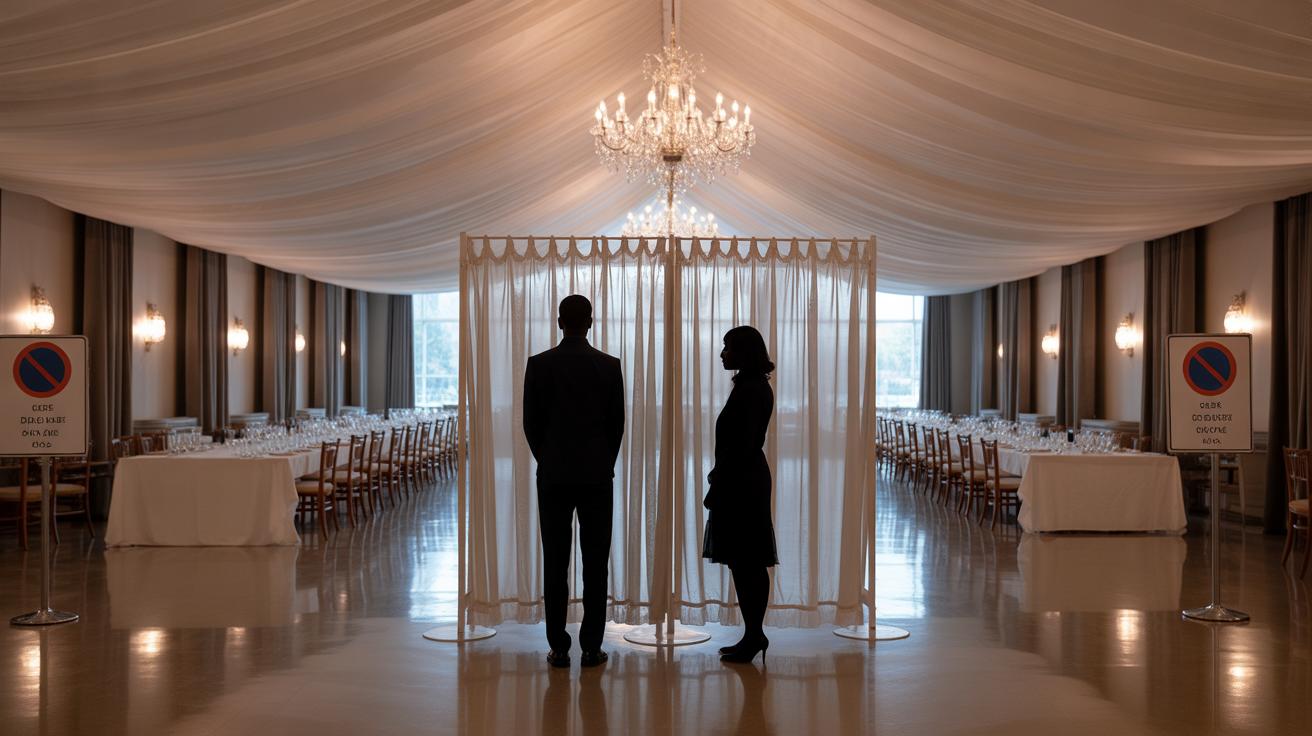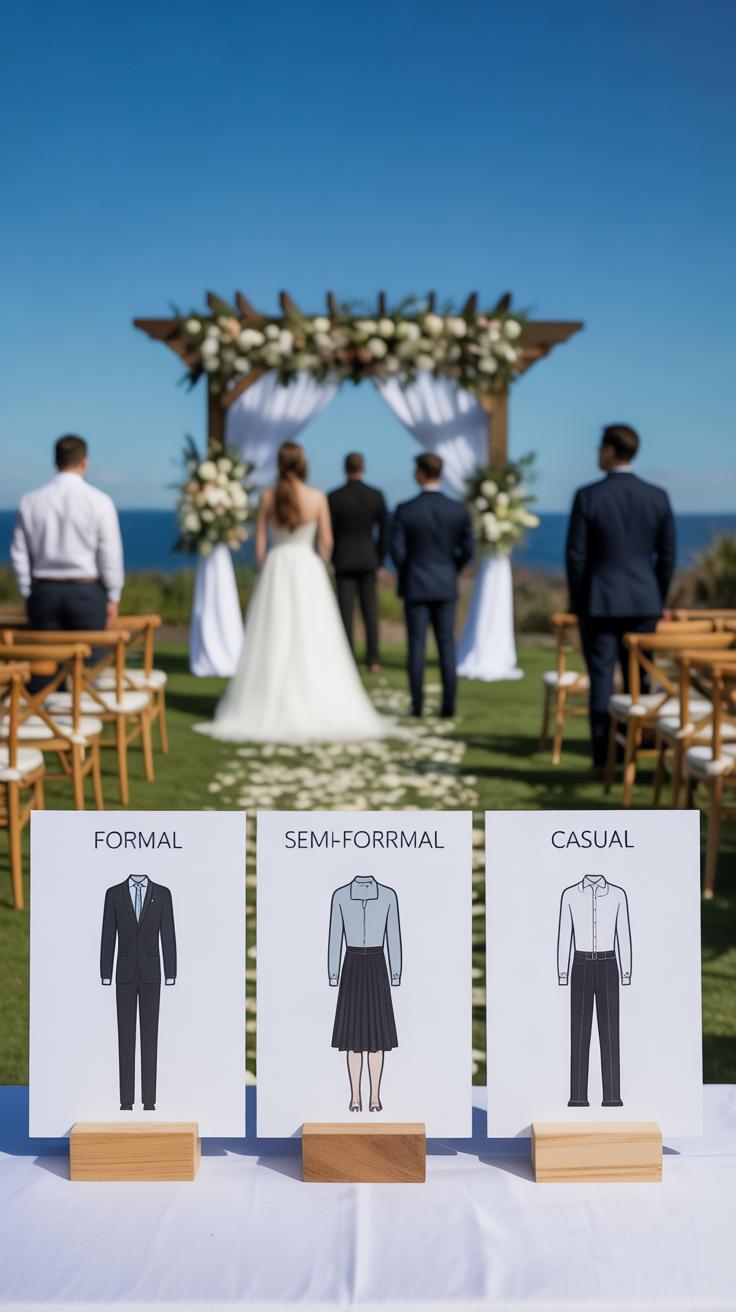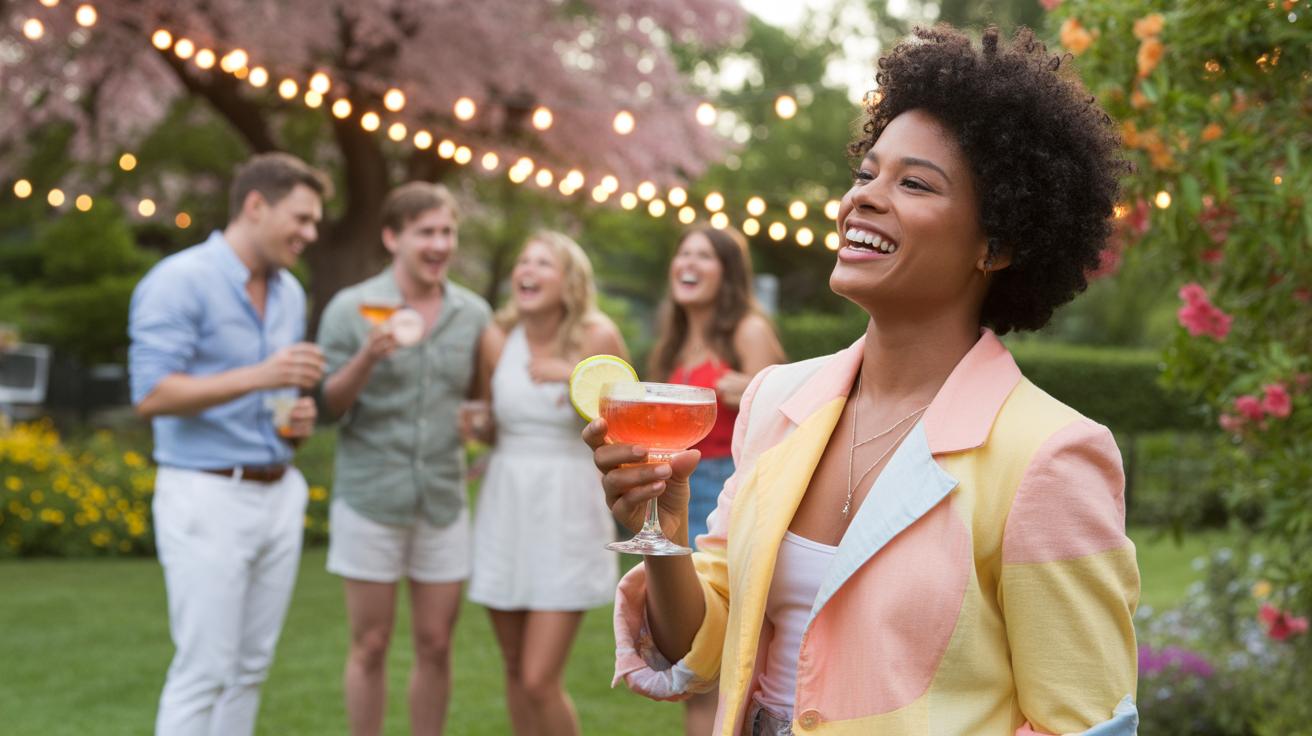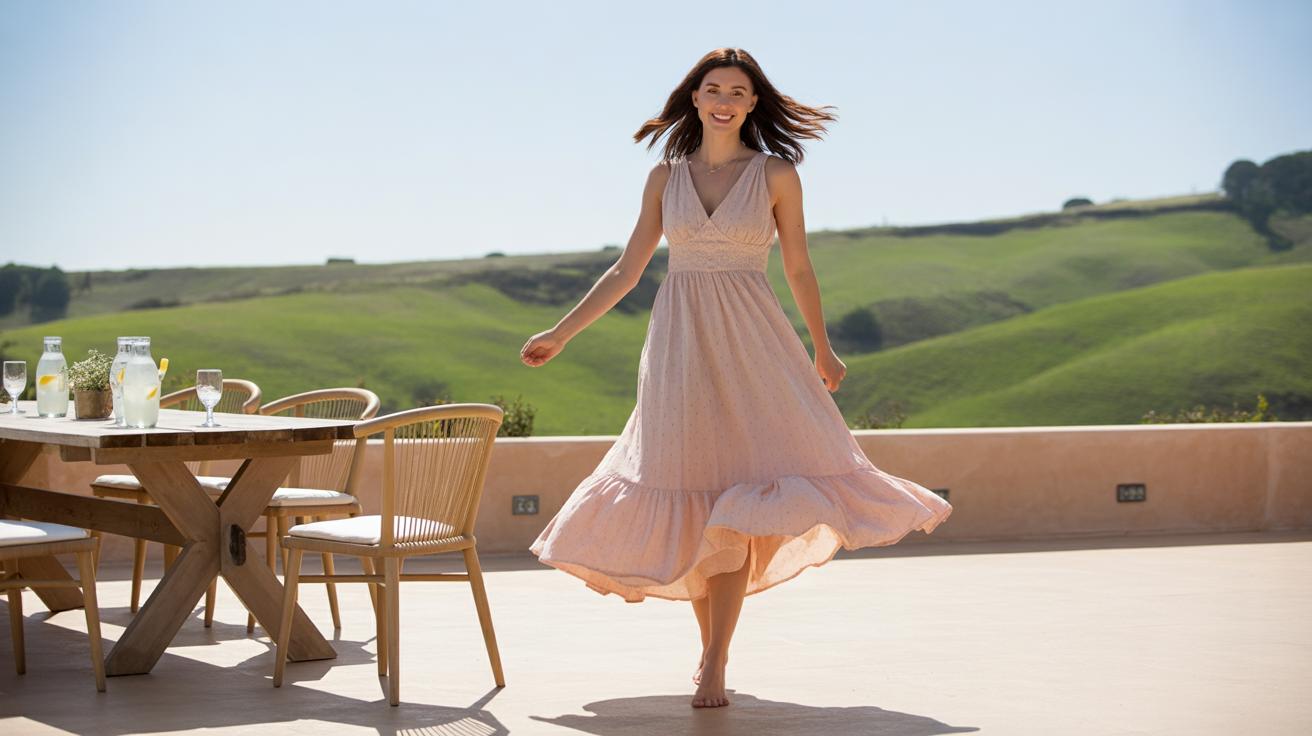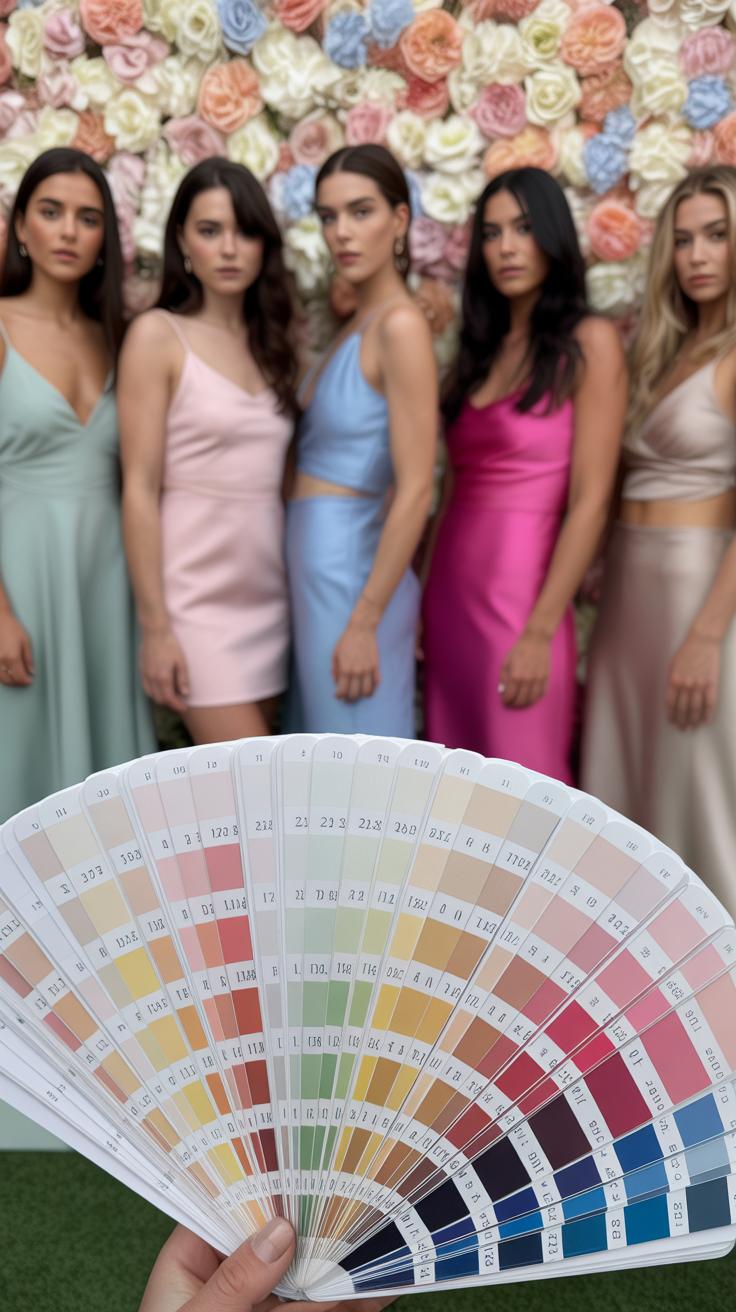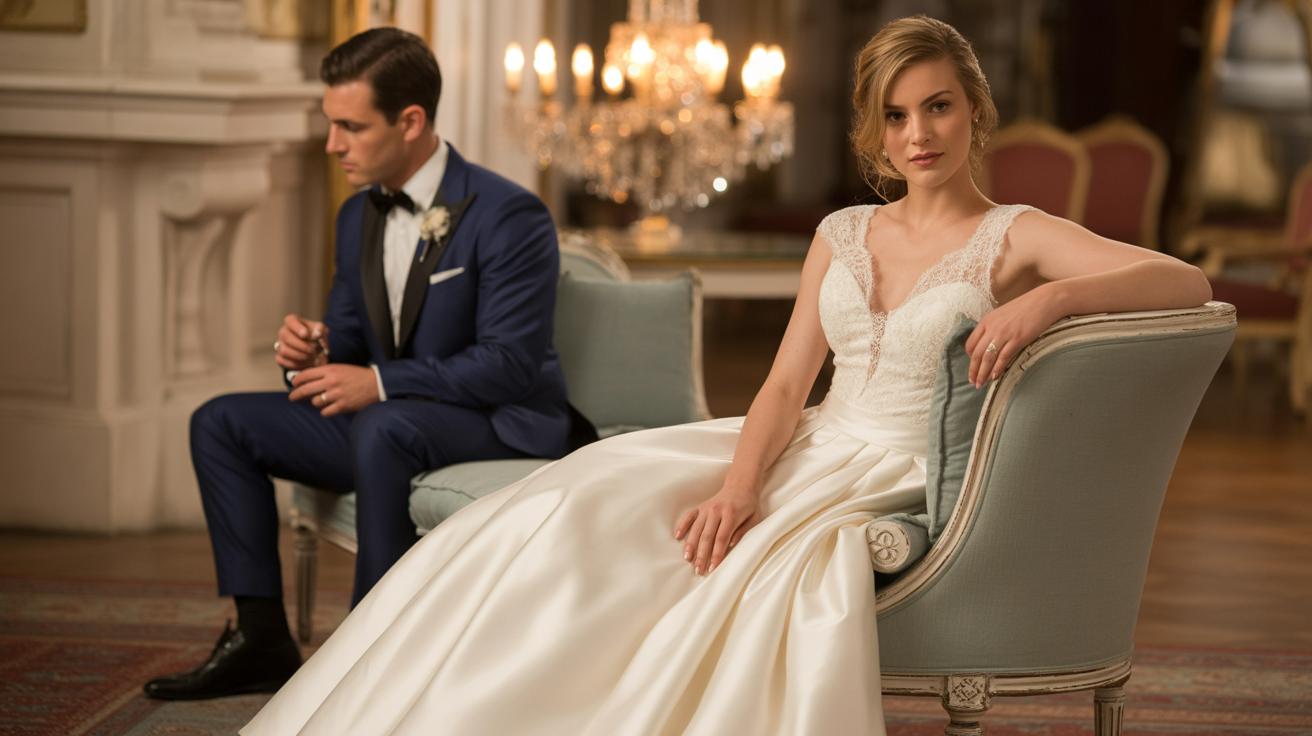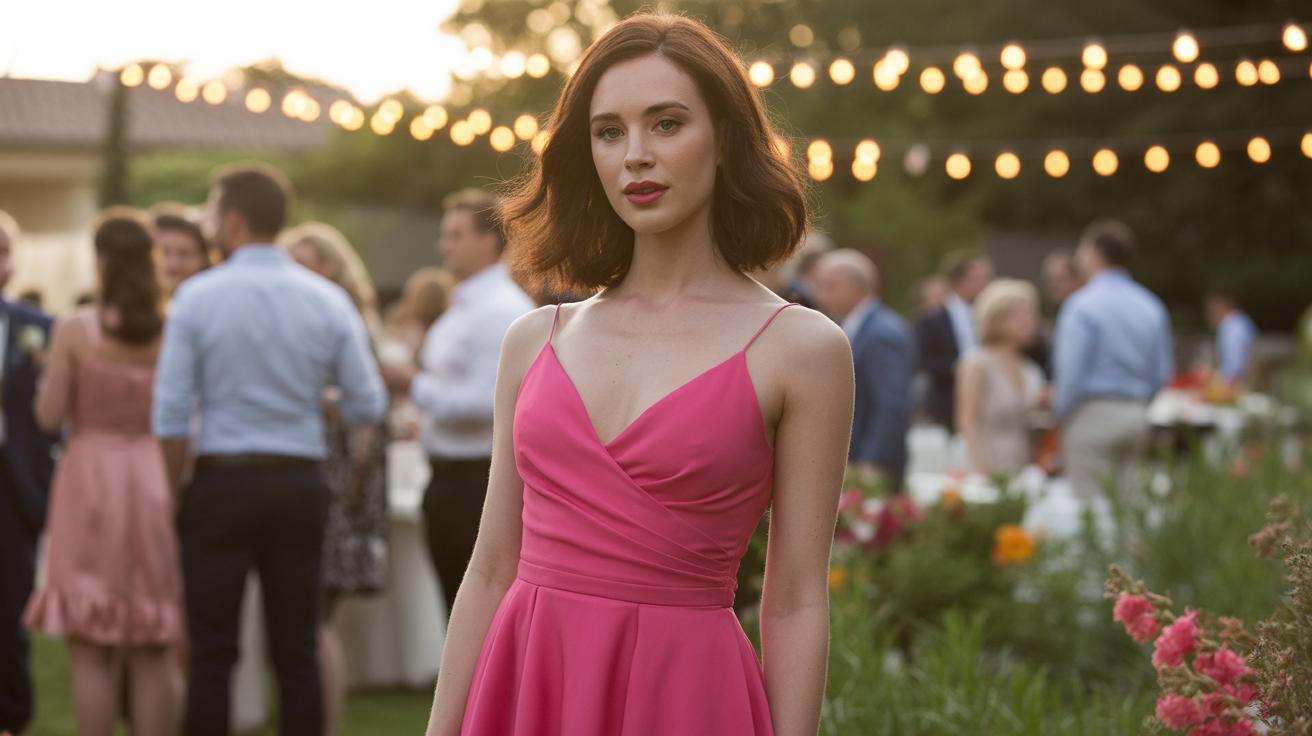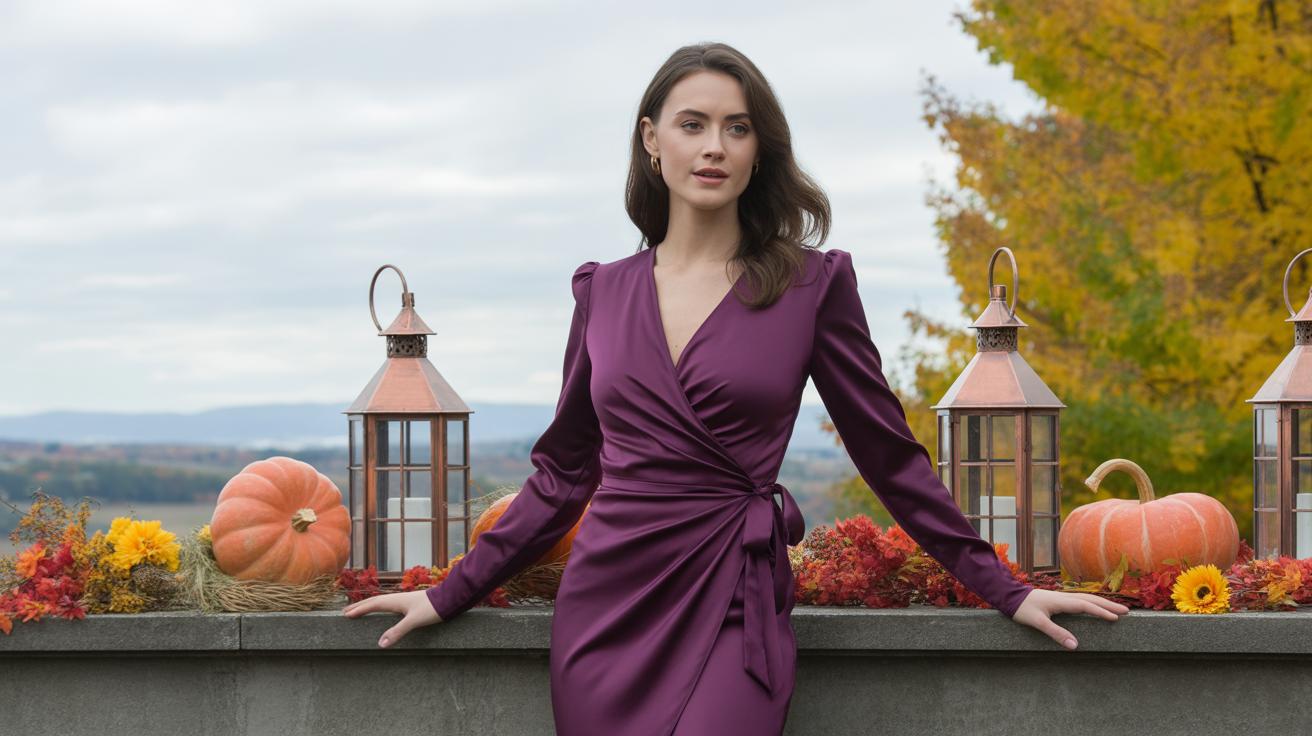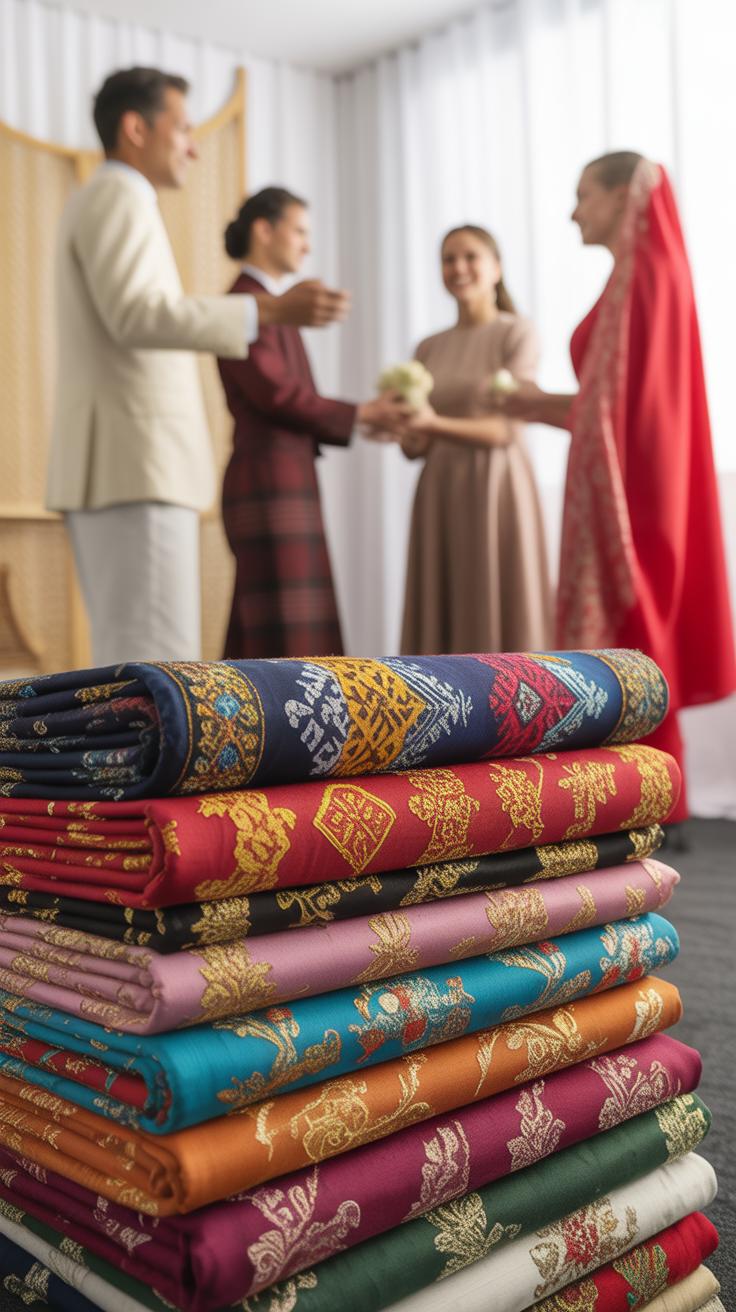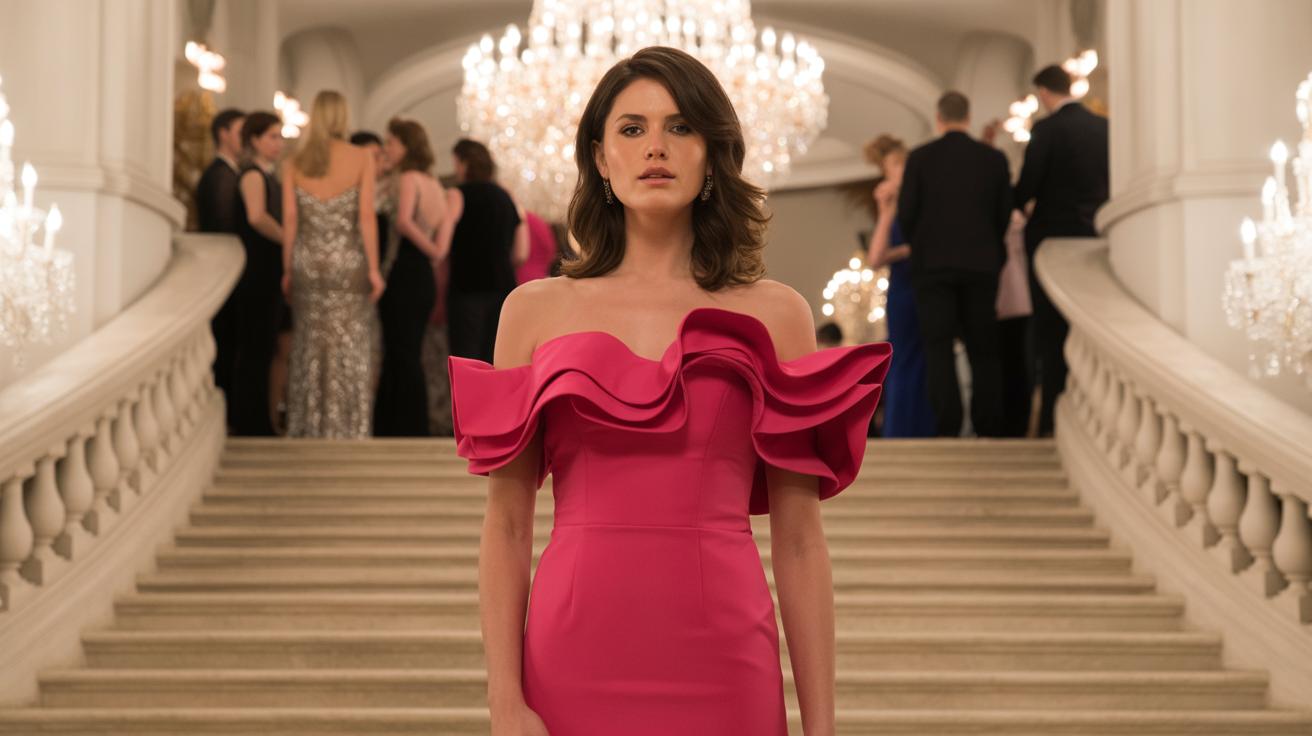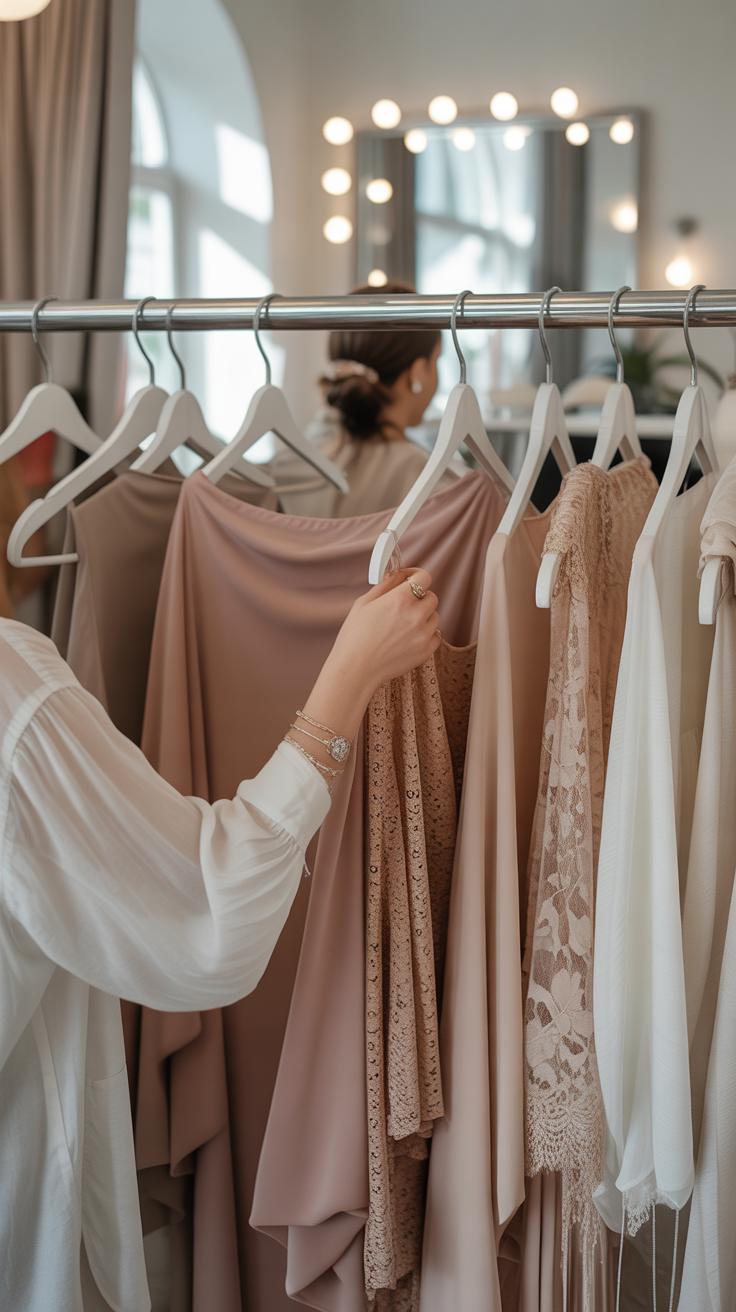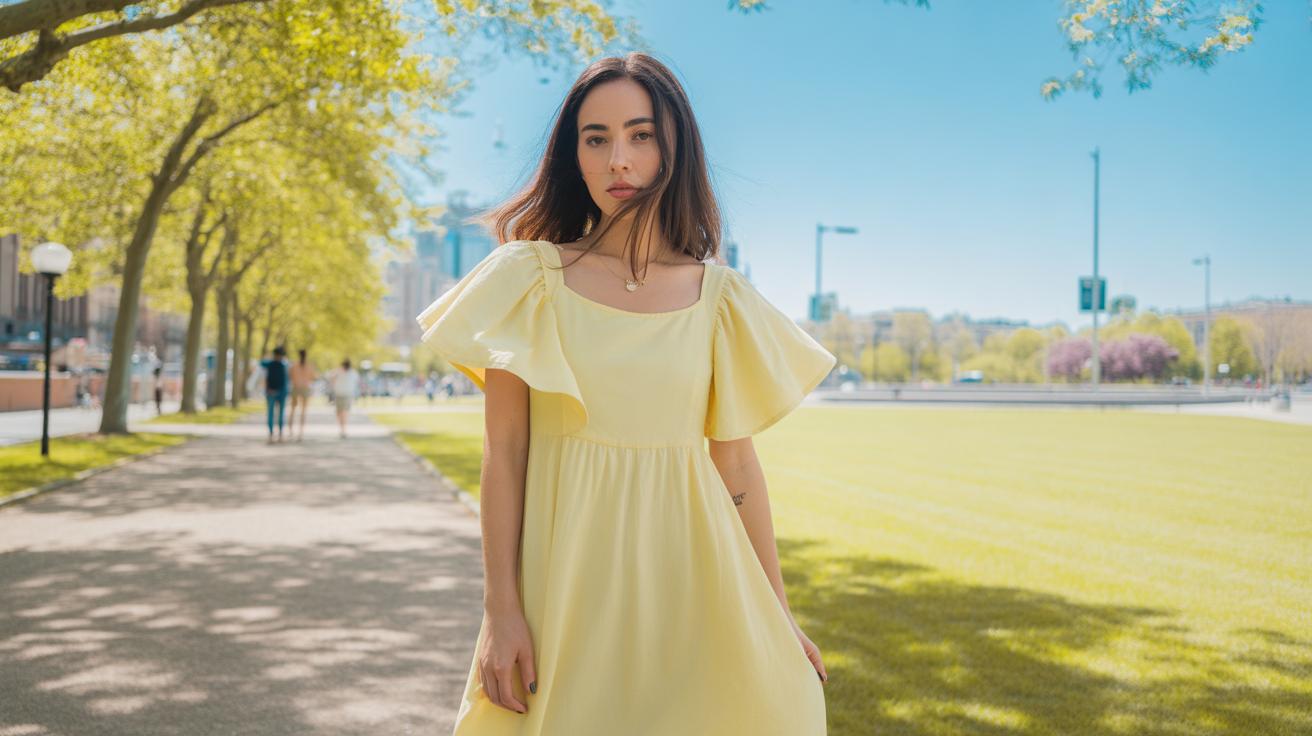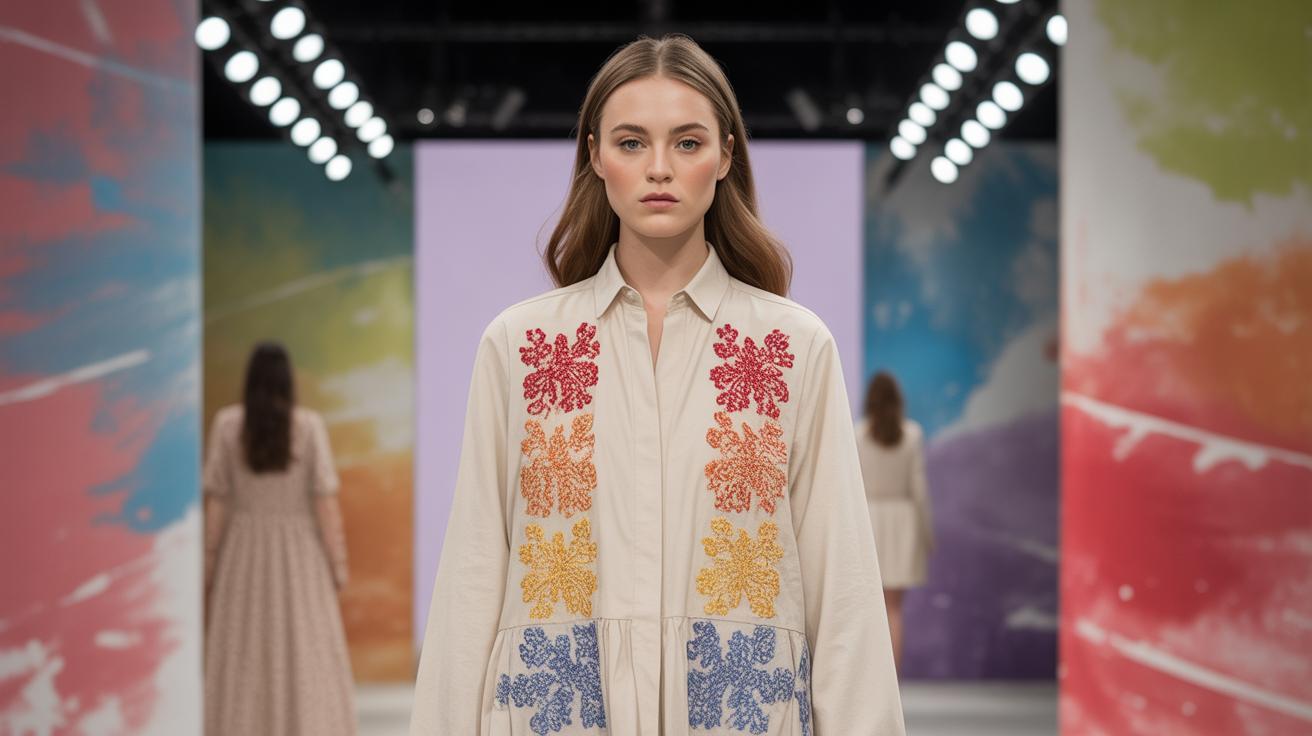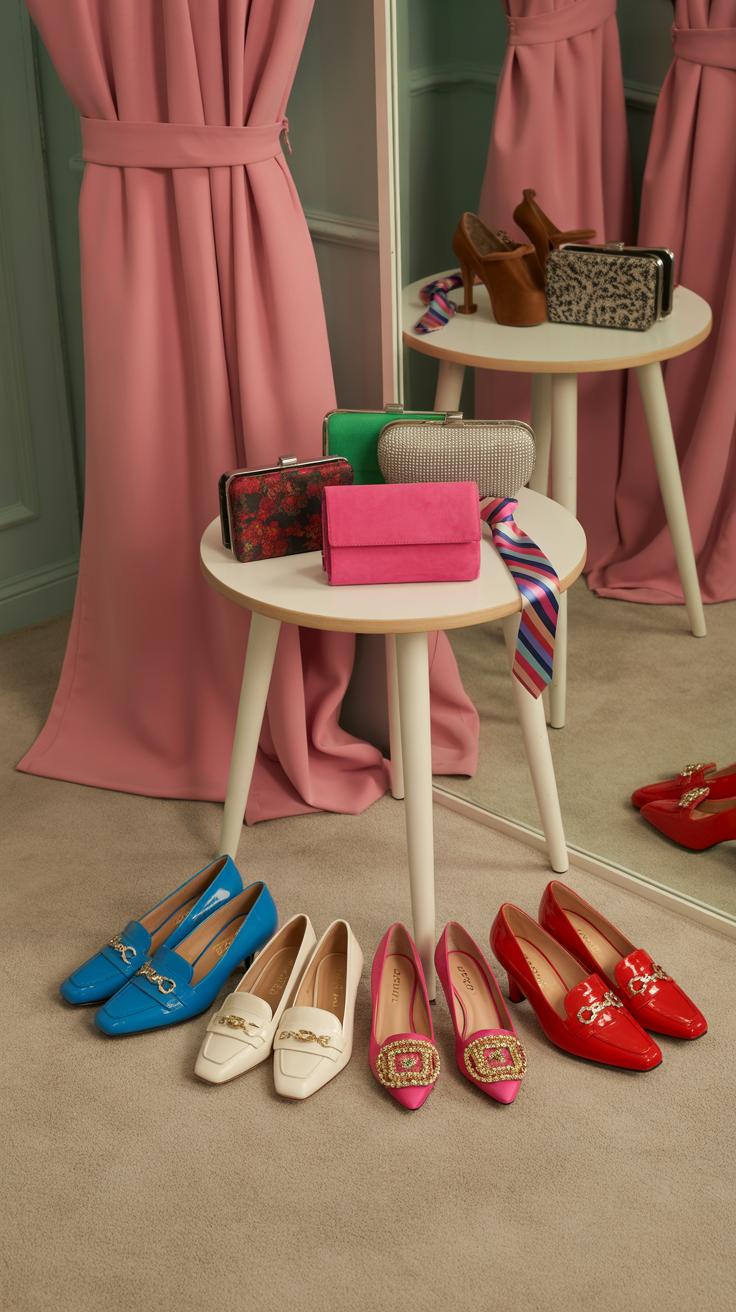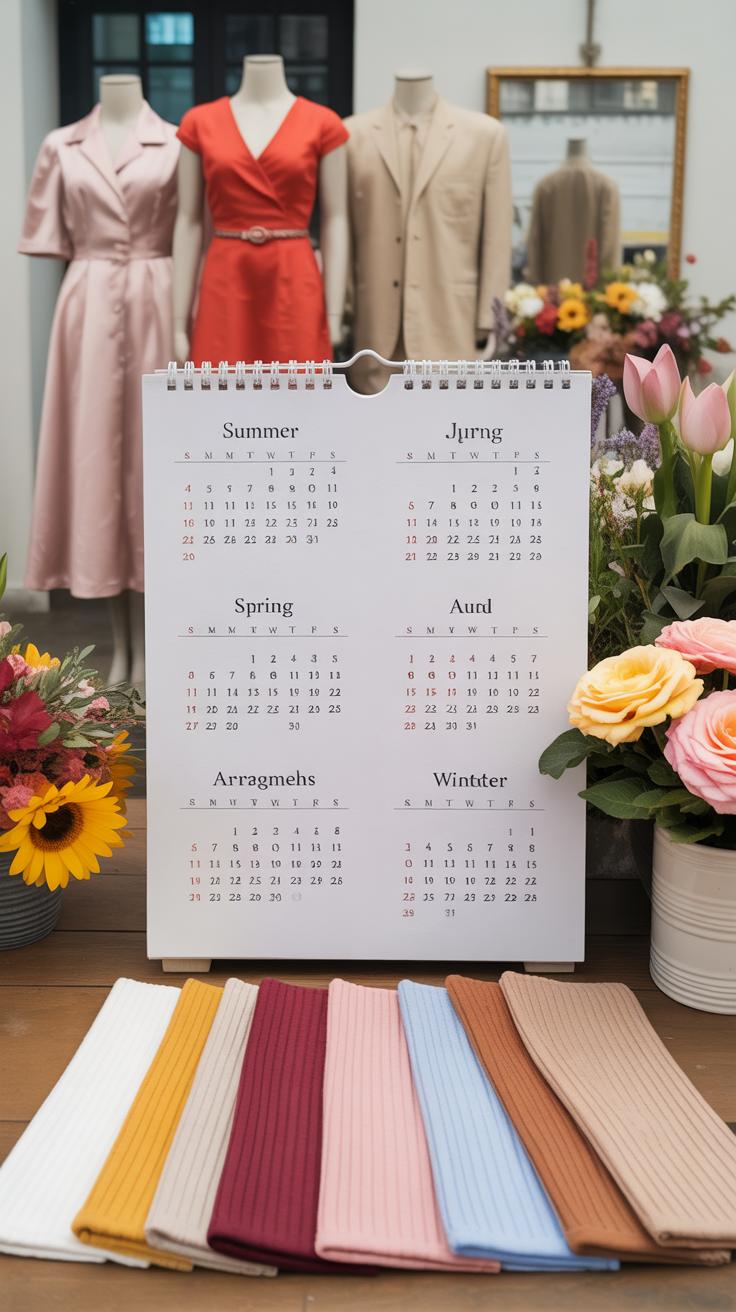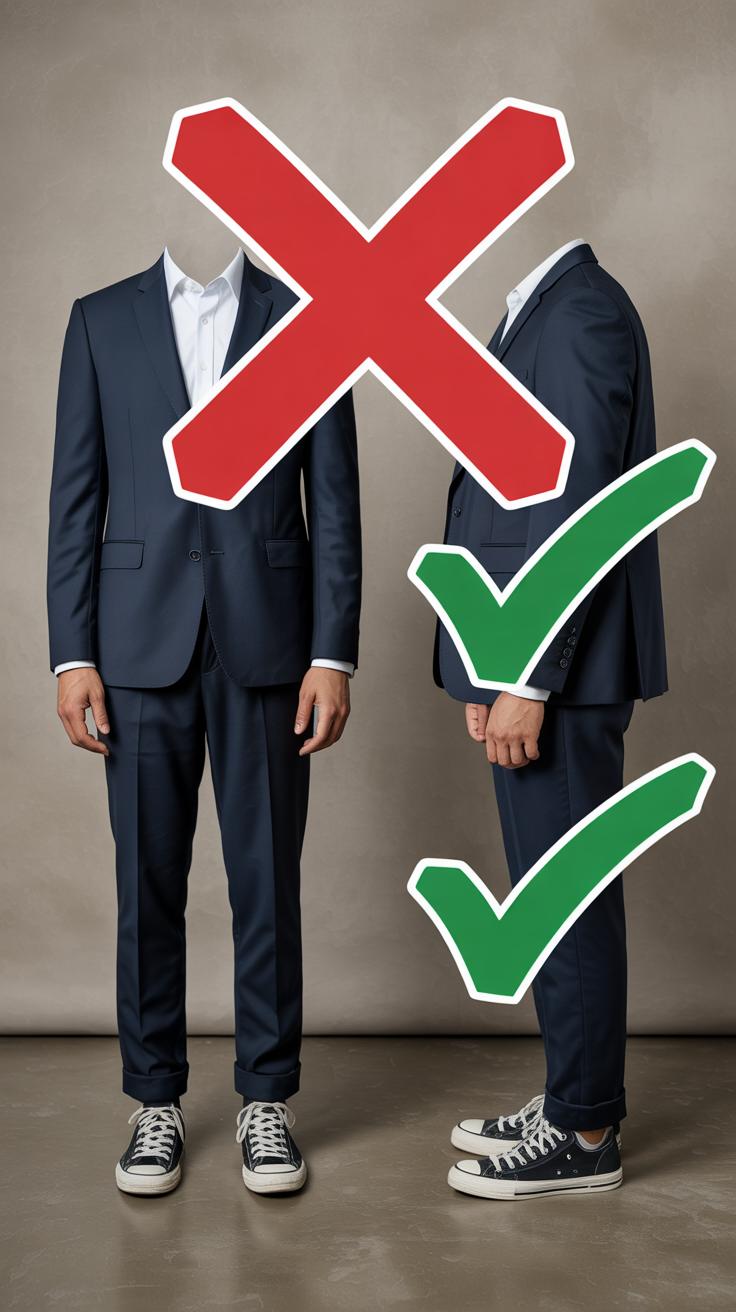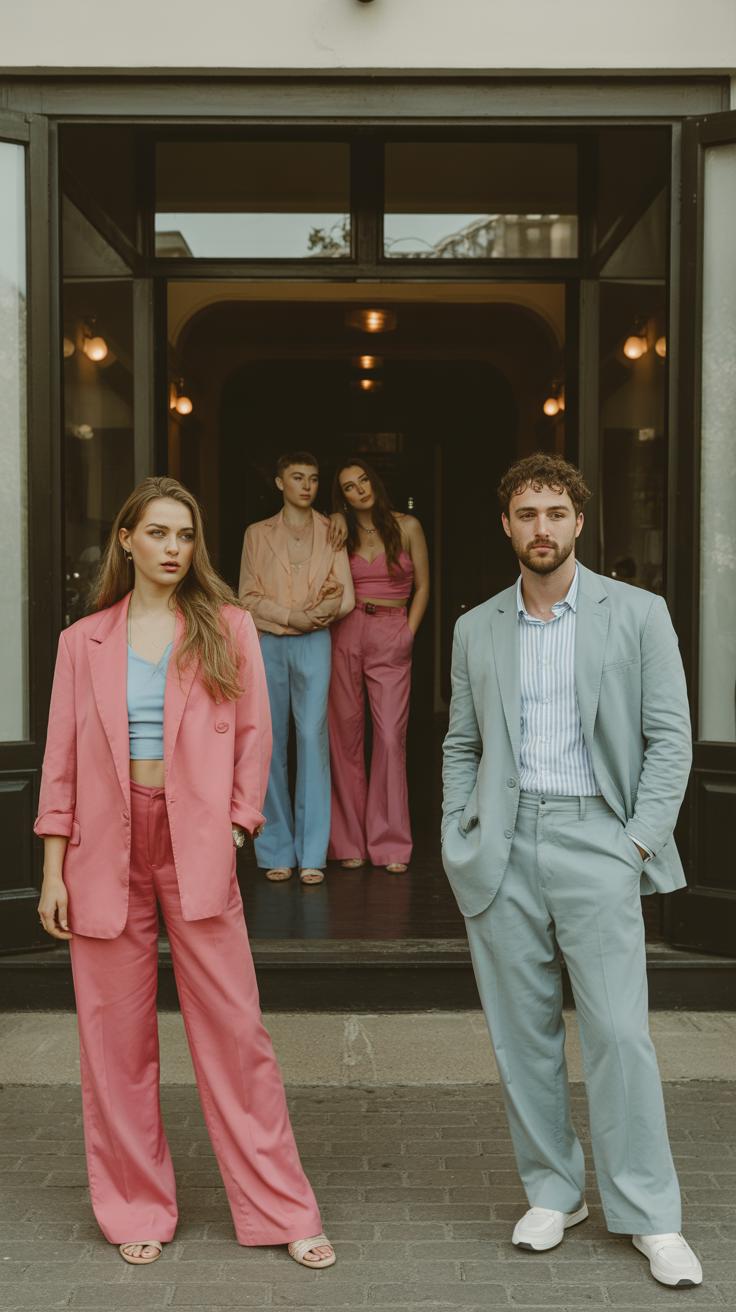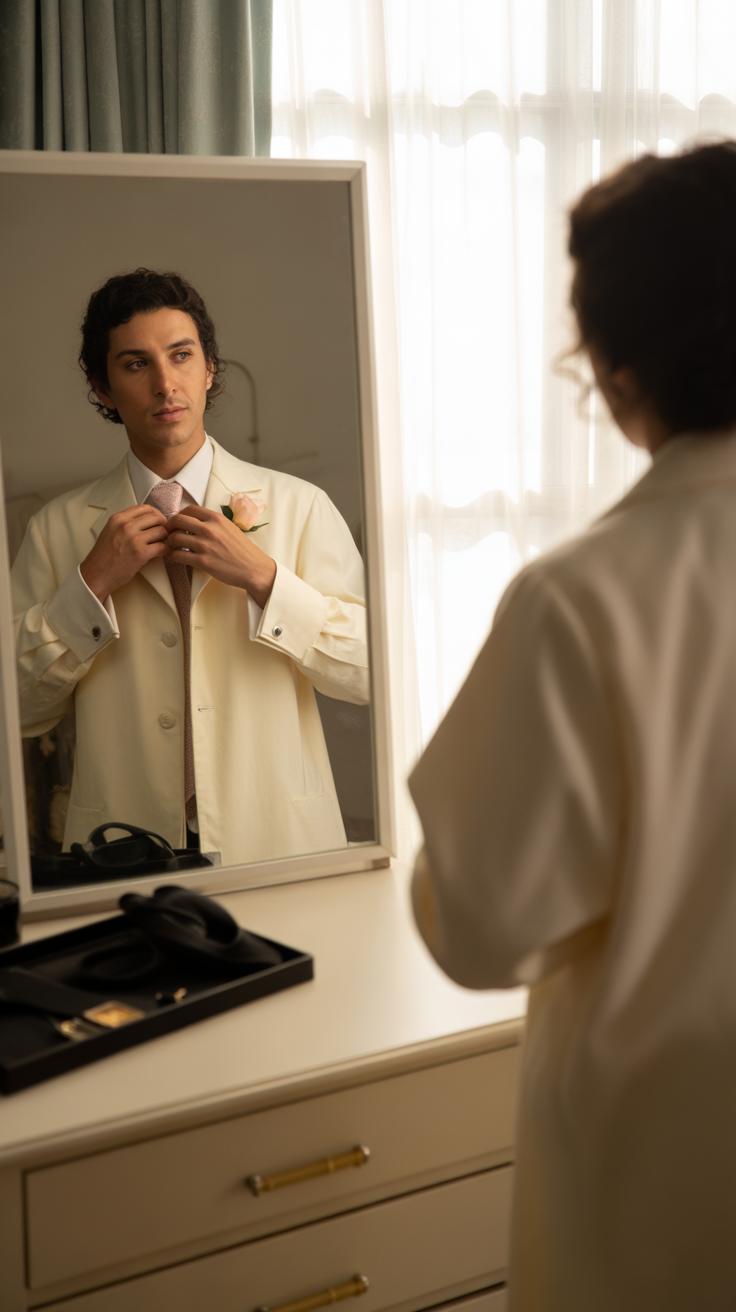Introduction
Weddings are special occasions that come with unknown dress codes and etiquette rules. Choosing what to wear as a guest can feel confusing. You want to look good, fit in, and show respect for the couple and their culture. Understanding the basic do’s and don’ts of wedding guest attire helps you prepare right for the event. This guide gives you clear, practical advice on how to dress appropriately regardless of the type of wedding.
Wedding attire tells a lot about your consideration for the hosts and the ceremony’s style. You might wonder what colors to avoid or whether jeans are acceptable at a wedding. This article covers all those questions and breaks down the main rules of wedding guest dress code. It offers easy tips for every season and wedding theme. With this knowledge, you will feel confident about your choice and enjoy the celebration fully.
Understanding Wedding Dress Codes
Wedding dress codes help you choose the right outfit that fits the event’s tone. These codes range from casual to black tie, and each one reflects how formal the wedding will be. Recognizing the dress code allows you to show respect to the couple and blend in comfortably.
Often, invitations provide clues about the dress code, sometimes explicitly stated or hinted through wording and design. Paying attention to these details keeps you from being underdressed or overdressed.
Understanding the dress code also makes it easier to plan your outfit without stress. It lets you focus on enjoying the celebration while honoring the event’s style and the couple’s wishes.
Common Wedding Dress Codes Explained
Casual dress means simple and comfortable clothing. For men, nice pants and a polo or button-down shirt work well. Women can wear sundresses or skirts and tops. Beach formal calls for lightweight fabrics. Men might choose linen pants with a button-up shirt, while women could opt for a flowy dress and sandals.
Cocktail attire asks for polished looks. Men should wear suits without ties, while women can choose knee-length dresses. Semi-formal is similar but a bit dressier; men wear dark suits and ties, and women can wear elegant dresses or dressy pantsuits.
Formal dress codes ask for more refined clothing. For men, a dark suit and tie are standard. Women might pick long or sophisticated knee-length dresses. Black tie optional means tuxedos are welcome but not required; men can wear tuxedos or dark suits, and women usually wear long dresses or fancy cocktail dresses.
Black tie calls for tuxedos for men and formal gowns for women. This level of dress signals the highest formality and respect for the occasion.
How To Recognize Dress Codes From Invitations
Invitations often name the dress code plainly, such as “Black Tie” or “Casual Attire.” Other times, wording gives hints, like “Evening Celebration” suggesting formal wear. The venue also provides clues. A wedding at a fancy hotel often means dressier clothes, while a garden party hints at more relaxed attire.
Look for phrases like “Cocktail Attire Requested” or “Casual Dress Encouraged.” These guide your choices clearly. Sometimes, the invitation’s design suggests the formality; simple designs lean casual, while ornate styles point toward formal attire.
Respecting the dress code shows you care about the couple’s vision. Ignoring it might make you feel out of place. Ask yourself, how can your outfit honor their special day? That thought leads to the right choices and demonstrates your respect.
Choosing The Right Colors
Picking the right colors for a wedding outfit shows respect for the couple and helps you blend into the celebration.
Avoid white and off-white shades like ivory or cream. These colors are traditionally worn by the bride. Wearing them risks drawing attention away from her on her special day.
Some cultures attach meaning to certain colors. For example, red symbolizes luck and happiness in many Asian weddings, but it might be too bold in other cultures. When you know the couple’s background, consider colors meaningful to their traditions.
Choose colors that complement your skin tone and suit the event’s style. Soft pastels, rich jewel tones, and classic navy or gray often work well. Ask yourself, “Does this color respect the wedding’s mood and culture?” If yes, that’s a good sign you’re on the right track.
Colors To Avoid At Weddings
White, ivory, and cream remain off-limits because these shades are reserved for the bride. Wearing them can confuse guests and upset the couple.
Black has different meanings depending on where you are. In some Western weddings, black is elegant and acceptable. In other cultures, it can symbolize mourning and is less appropriate.
Consider the ceremony’s setting too. A daytime garden wedding might call for brighter colors rather than dark tones. Ask yourself if your color choice might seem too somber or festive for the event’s atmosphere.
How To Pick Flattering And Appropriate Colors
Match your outfit to the wedding’s theme colors if known. This shows thoughtfulness and avoids clashing with the bridal party.
The season can guide your color choices. Warm tones suit fall weddings, while light blues and pinks fit spring and summer events.
The venue affects the style and color palette. Formal ballrooms often welcome deeper, classic colors, whereas beach weddings call for lighter, casual hues.
Safe colors include navy, burgundy, blush, sage green, and soft lavender. These look good on many skin tones and won’t compete with the bride’s outfit.
Think about how your color will photograph. Will it stand out positively, or distract from the event’s overall look? Choosing thoughtfully helps you honor the couple’s day and feel confident throughout the celebration.
Respecting Cultural Traditions In Attire
Understanding cultural wedding customs helps you show respect through your clothing. Every culture has unique attire that reflects its values and history. Wearing an outfit that honors these traditions can make you a thoughtful guest. For example, men might wear a South Asian sherwani, a long coat with embroidery, while women may choose bright Indian sarees. Japanese weddings often feature kimonos that carry intricate patterns symbolizing happiness. In contrast, Western weddings typically center around a white gown for the bride, while guests avoid white to prevent upstaging her.
Are you aware of what the wedding attire signifies in the culture you’re attending? Respect comes from effort. Learning about these customs before the event shows you value the couple’s heritage. Have you considered which specific colors, fabrics, or styles carry meaning in the culture’s attire? Small choices speak volumes about your respect for their tradition.
Recognizing Cultural Wedding Dress Norms
Traditional wedding garments carry meaning beyond their appearance. Indian sarees, often adorned with gold thread, symbolize prosperity and joy. Sherwanis showcase elegance and are typically worn by the groom or male guests. Japanese kimonos display patterns and colors chosen for good fortune and seasonal significance. Western white gowns represent purity for the bride, setting a clear color boundary for guests.
Knowing these details helps you avoid unintentional disrespect, like wearing white to a Western wedding or selecting inappropriate colors at an Indian ceremony. When you attend culturally specific weddings, understanding what each garment represents prepares you to make better choices. What stories do these clothes tell? What details must you be sure to respect when choosing your outfit?
How To Dress Respectfully At Culturally Specific Weddings
Start by researching the ceremony style and any attire traditions. Ask the couple or their family about dress expectations if you are unsure. It often helps to wear traditional clothes only when invited or expressly encouraged. Otherwise, find ways to include cultural elements respectfully, like adding a sash, scarf, or accessory in traditional fabrics or patterns.
Consider cultural norms around modesty and color meaning. For example, some cultures prefer covered shoulders or heads during ceremonies. If traditional attire isn’t suitable, aim for neutral, elegant clothing while honoring these preferences. Dressing respectfully means putting in effort to learn and adapt rather than defaulting to your usual style. How much do you know about the specific customs? Can your choices show appreciation and respect without overshadowing the ceremony?
Selecting Appropriate Styles And Fabrics
Choosing your outfit should match the wedding’s formality and season. For a black-tie event, a long dress or a tailored suit fits well. Casual or daytime weddings allow shorter dresses or smart separates. Think about the venue—a garden ceremony calls for lighter fabrics and comfortable cuts, while a formal ballroom suggests structured styles.
Consider the season carefully. Summer weddings demand breathable materials to keep you cool. Winter events need fabrics that offer warmth without bulk. Your goal is to stay comfortable while respecting the event’s tone.
Pay attention to how fabrics behave in different climates. Some materials wrinkle easily, which can spoil a polished look. Choosing fabrics that resist wrinkles keeps your outfit neat throughout the day. Have you ever worn a suit that felt heavy and made you uncomfortable? Picking the right fabric can prevent that problem.
Style Tips For Different Wedding Settings
Weddings held indoors or outdoors call for different outfit styles. For evening or formal affairs, long dresses or dark suits provide elegance. Daytime or casual weddings suit knee-length dresses or light suits. Separates like a blouse with a skirt can offer flexibility and comfort.
Keep modesty in mind. Avoid outfits revealing too much skin, especially for religious venues. Simple necklines and appropriate hemlines show respect without sacrificing style. Imagine being at a ceremony where the dress code feels unclear—sticking to modest and elegant pieces helps you blend in comfortably.
Think about the type of shoes you’ll wear with your chosen style. Some dresses pair well with heels, while others work best with flats or sandals. Every detail contributes to a cohesive look that fits the occasion.
Best Fabric Choices For Comfort And Elegance
Natural fibers like cotton, linen, and silk offer breathability for warm-weather weddings. Cotton keeps you cool, and linen has a relaxed vibe but can wrinkle. Silk feels luxurious and drapes nicely but suits more formal events.
For cooler seasons, wool blends, velvet, and heavier silks add warmth. These fabrics keep you comfortable without looking bulky. Avoid materials like polyester that trap heat or creases easily.
Synthetic blends often resist wrinkles better and can work well if mixed with natural fibers. Think about the duration of the event—heavy, non-breathable fabric can cause discomfort over hours. Have you ever felt hot and restless at a wedding? Choosing the right fabric helps you avoid that experience.
Footwear And Accessories For Guests
Your choice of shoes at a wedding should balance style with comfort. You might look great at first, but uncomfortable shoes can ruin the day. Imagine standing or dancing for hours in high heels that pinch or in shoes that don’t fit well. Consider the wedding’s location before picking your footwear. Slippers work well on soft sand, but they won’t hold up on stairs or uneven ground. Closed shoes suit formal ceremonies, while stylish flats or low wedges offer comfort without sacrificing elegance. Think about the event’s pace and your plans—will you be moving around a lot, sitting, or both? Try your shoes ahead of time to avoid surprises on the big day. Have you worn a pair for at least an hour before the event? This simple test helps you decide if they’ll support you throughout the celebration.
Choosing Wedding Appropriate Shoes
Beach weddings ask for open-toed sandals or flats that prevent sand from trapping your feet. In contrast, ballroom or church settings call for closed-toe shoes, like pumps or dress shoes, that match the formality. If the event uses grass or gravel, think about heels that won’t sink in. Comfort matters—choose shoes with padded soles or opt for brands known for support. If heels aren’t your style, look for dressy flats or block heels that distribute weight better. Can you picture walking smoothly across different surfaces with your chosen shoes? Anything that forces you to adjust your walk or hunch your back will cause discomfort quickly. Having a backup pair ready also works wonders for peaceful celebrations.
Accessorizing Without Overdoing It
Select accessories that improve your outfit, not distract from it. Simple jewelry like small earrings or a thin necklace adds subtle elegance. Pick a purse or clutch sized just right for your essentials to avoid bulkiness. Think about colors that blend well with your clothing rather than clash. Avoid large, shiny pieces that steal attention from the couple. What message do your accessories send? Stick to items that feel natural when worn and reflect your personal taste. Avoid jingling bracelets or oversized statement pieces that could disrupt conversations or photos. Your goal is to complement the outfit and the event’s tone, not outshine the bridal party or create visual noise.
Following Seasonal Guidelines
Seasons shape what you should wear to a wedding more than you might realize. Choosing the right fabric weight keeps you comfortable from start to finish. Thin, breathable materials suit warm months, while thicker fabrics protect you in cold weather. Think about layering options that allow you to adjust throughout the day. For example, a shawl or light jacket works well for cooler evenings in spring or fall. Colors also change with the seasons. Light pastels and bright tones fit spring and summer. Darker, muted shades work better in fall and winter.
Have you noticed how you feel in heavy clothes on a hot day? Or chilled when underdressed in winter? Planning your outfit with these factors in mind shows respect for the couple’s event and helps you enjoy the celebration without distraction.
Dressing For Summer And Spring Weddings
Focus on fabrics that let your skin breathe. Cotton, linen, or lightweight blends keep you cool and prevent sweating. Choose colors like soft pinks, light blues, or fresh greens that match the season’s energy. Sleeveless or short-sleeved dresses, flowy skirts, or light suits offer comfort without sacrificing style. Consider sun protection by adding a wide-brimmed hat or subtle sunscreen to avoid sunburn during outdoor ceremonies.
Could your outfit survive a hot afternoon and a cooler evening? Bringing a simple wrap or cardigan lets you stay adaptable while maintaining your look. Comfort matters as much as appearance, so pick styles that let you enjoy the celebration freely.
Dressing For Fall And Winter Weddings
Choose materials that trap warmth, like wool, velvet, or heavier cotton. Layering plays a bigger role here; you might wear a tailored jacket under a coat, or pair tights with your dress. Darker colors such as deep greens, burgundy, navy, or charcoal suit the mood of colder months. Outerwear should be neat and wedding-appropriate, like a classic trench or wool overcoat. Gloves and stylish scarves add both warmth and elegance.
Do you have a plan to stay warm without losing style? Dressing well in cold weather means preparing for temperature shifts between ceremony and reception. A versatile outfit keeps you comfortable and polished when crossing from chilly outdoors to heated venues.
Avoiding Common Attire Mistakes
Mistakes In Color And Style Choices
Wearing white to a wedding often upsets the couple because it draws attention away from the bride. You should avoid white or cream shades unless the dress code explicitly allows it. Dressing too casually, like wearing jeans or sports shoes, risks looking disrespectful. Weddings usually call for a polished look that fits the event’s formality. Revealing outfits may make others uncomfortable and distract from the celebration. Choose clothing that balances style and modesty. Footwear matters too. Flip-flops or sneakers can seem out of place unless the venue is very casual. Opt for clean, smart shoes that match your outfit and are suitable for the setting. Always ask yourself: does my outfit show respect to the couple and the occasion?
Mistakes In Ignoring Dress Codes Or Cultural Norms
Ignoring a dress code often means your outfit clashes with the event’s tone. If the invitation says “black tie,” a casual dress won’t work. If it says “beach formal,” a tuxedo feels out of place. Following the requested dress code shows you value the hosts’ wishes. Some weddings include cultural or religious customs that come with specific attire rules. Wearing something inappropriate may offend the couple or their families. For example, covering shoulders might be required in certain religious ceremonies, or wearing brightly colored clothes could be inappropriate in cultural settings. If unsure, ask the hosts or other guests for advice. How will your outfit honor their traditions and bring a sense of unity to the event?
Coordinating With Plus Ones And Group Guests
When attending a wedding with a date or a group, planning your looks together can make a big difference. Coordinating outfits helps photos look more balanced and makes the whole event feel more polished. It also shows respect for the couple by honoring the wedding’s theme or dress code.
Think about colors, styles, and the formality of the event when choosing your attire. Asking your plus one or group what they plan to wear avoids clashes, like one person dressing very casually while another is formal. When everyone complements each other, it creates a unified appearance in group shots and during the event.
Have you considered how your outfits will show up in pictures or fit the mood of the celebration? Talking it over early can prevent last-minute stress. Coordination does not mean matching exactly; it’s about harmony that respects the wedding’s tone and your personal style.
How Couples And Friends Can Match Styles
Matching with your date or friends doesn’t mean wearing the same thing. Instead, focus on choosing colors that work well together or picking outfits with similar formality. For example, if your date wears a navy suit, you could wear a dress with a blue shade or neutral tones.
Selecting clothes that share a similar level of dressiness keeps your look balanced. Avoid both showing up too flashy or too casual compared to each other. You might choose complementary accessories or subtle patterns that tie your looks quietly together.
This approach creates confidence and ease without making your outfits look like uniforms. How can you bring out your personality while staying coordinated? Thinking about this can help you make smart choices that please everyone.
Tips For Group Guests Attending Together
When going to a wedding as a group, start by agreeing on the dress code. If the invite says “cocktail” or “semi-formal,” make sure everyone understands what that means. Share details about the event, such as location and theme, to help guide outfit choices.
Communicate openly and support each other’s plans. If a friend isn’t sure about their outfit, offer honest feedback or help them find options that fit the group’s style. Group chats can be useful for sharing ideas and photos of outfits.
Plan to arrive together if possible. Coordinated arrival creates a good impression and helps everyone feel comfortable. Have you tried discussing your plans ahead of time to avoid last-minute outfit surprises? Simple teamwork like this strengthens your group’s style and presence at the wedding.
Final Tips For Confident Wedding Attire Choices
When preparing for a wedding, feeling confident in your outfit makes a big difference. Comfort and confidence go hand in hand. Ask yourself, does this outfit make you want to stand tall and smile? If yes, you are on the right track.
Think about the event’s setting and the dress code before you finalize your look. Are you comfortable moving and sitting in your clothes? Try walking around or sitting down in your outfit to test this. Your shoes should fit well and support your feet through hours of standing or dancing.
Remember, simple choices often look the best. Avoid over-accessorizing, and pick colors that suit both the occasion and your personal style. When you feel good in your outfit, it shows, and that energy is part of what people notice most.
Checklist To Prepare Your Wedding Outfit
Start by confirming the dress code from the invitation or a trusted source. Check if the event is formal, semi-formal, or casual, and dress accordingly.
Plan your accessories early. Choose shoes, jewelry, and bags that complement your outfit without overpowering it. Make sure your accessories match the tone of the wedding.
Schedule any necessary fittings at least a week before the event. This gives you time to make adjustments. Don’t wait until the last minute to try everything on together.
Test your outfit by wearing it for a few hours before the wedding day. Notice any discomfort or tightness and fix these issues beforehand. This will reduce stress and help you feel prepared.
How To Carry Yourself At The Wedding
Good posture can change the way others see you and how you feel. Stand straight with your shoulders back but relaxed. Avoid slouching, especially during photos.
Move smoothly and maintain eye contact when speaking to others. This shows confidence and respect for those around you.
Keep your hands relaxed. Avoid fidgeting, which can show nervousness. Instead, hold a clutch or rest your hands comfortably at your sides.
Listen actively and smile naturally. Engaging with others will make you feel more at ease and leave a positive impression.
How can you make these tips part of your wedding experience to feel more at ease? Practice in front of a mirror or with a friend to boost your confidence before the big day.
Conclusions
Wedding guest attire requires thought and respect for the couple’s wishes and cultural norms. When you choose your outfit carefully, you show appreciation for the event’s significance and avoid drawing unwanted attention. Keep in mind key do’s like following invites’ dress code, choosing modest cuts, and wearing comfortable yet polished shoes. Avoid don’ts such as wearing white, overly casual styles, or anything that might overshadow the bride or groom.
Your goal is to enhance the wedding atmosphere by blending style with respect. Remember that every wedding has its unique mood and expectations. By preparing thoughtfully, you contribute positively to the event and make lasting good impressions. Next time you get a wedding invite, you will know precisely how to dress from head to toe and behave with confidence. Dressing right makes celebrating love even more joyful.


